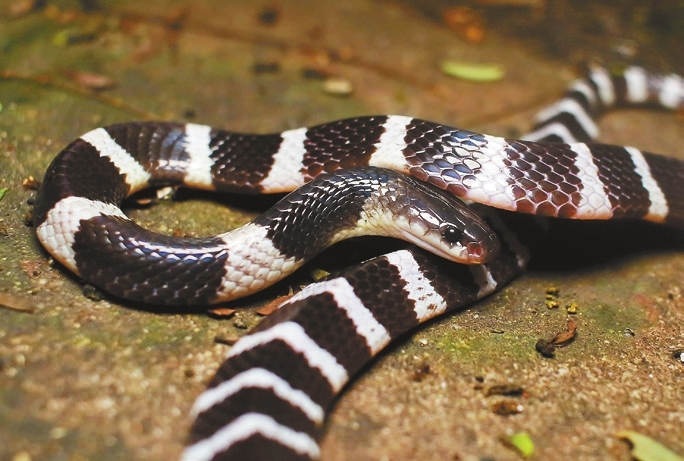
Considered the most venomous snake in China, the many-banded krait (Bungarus multicinctus) is as beautiful as it is lethal. Capable of growing up to 1.5 meters in length, this small snake possesses a highly toxic venom with the ability of paralyzing the regular functions of its victim’s body, leading to a quick death of its prey. This species’ venom even has its own name, the bungarotoxin, named after this amazing family of reptiles. This fascinating snake is covered by a striking bright black and white banding pattern, where the black bands gradually decrease in width from head to tail. The beautiful white bands have given this species the common name of “silver rings,” as addressed by local people, which in my opinion is a better name for it. Its black head is not big or prominent as in other types of snakes; the tail is very short and thinner than the body; and the bands are incomplete on the ventral part of the animal. Therefore, the snake has a whitish grayish belly. The many-banded krait is active during the night when it has a predominant presence in its territory in search of frogs, lizards or even other snakes. In spite of their high lethality, this amazing animal is not at all aggressive. Its primary reaction when spotted by humans is to flee the scene or continue its way to safety. Even when feeling threatened, it will try to hide its head beneath its body in order to protect it. The many-banded krait has a similar appearance to a non-venomous snake called the wolf snake. It is not recommended to approach them or handle them at all. All animals in their habitats should be left alone and we should provide them with our protection for the healthy development of our natural ecosystems. | 
